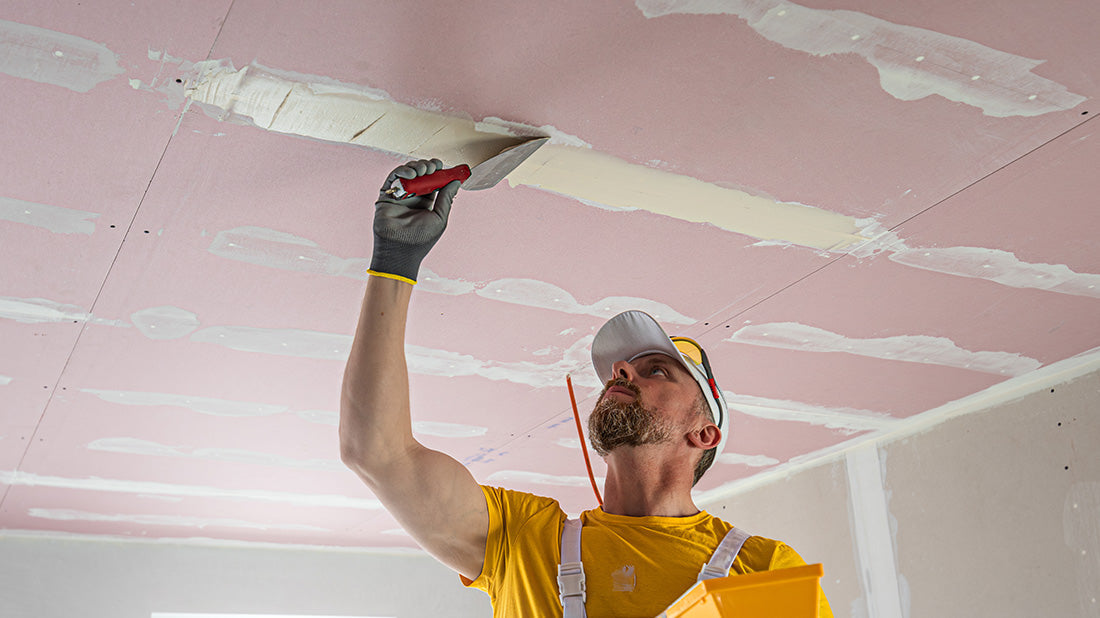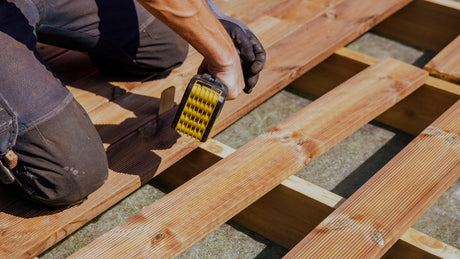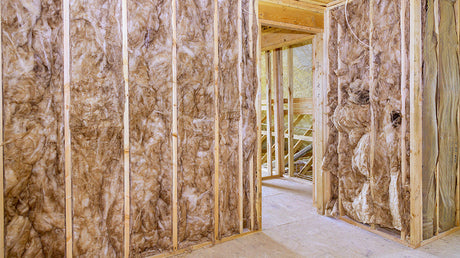The requirement for fire resistant plasterboard is determined by a combination of building regulations, specific risk assessments, and best practice considerations.
Understanding where these specialised materials are mandatory versus beneficial helps ensure both regulatory compliance and appropriate protection for building occupants and assets.
Regulatory Requirements in Domestic Settings
UK building regulations specify several domestic applications where fire resistant plasterboard is typically required:
Attached Garages The wall between an attached garage and the dwelling must provide adequate fire separation:
- Single layer 12.5mm fire-resistant plasterboard typically meets minimum requirements (30 minutes fire resistance)
- Enhanced specifications may be necessary depending on specific local authority interpretations
- The ceiling of an attached garage with accommodation above requires similar protection
- Particular attention to junction details and service penetrations is essential for maintaining the fire barrier integrity
This requirement addresses the increased fire risk associated with vehicle storage, fuel, and common garage activities.
Protected Escape Routes: Stairs and hallways providing the primary escape route in multi-level homes require fire protection:
- Walls and ceilings of stairwells in two-storey homes may require 30 minutes fire resistance
- In homes with three or more storeys, 60 minutes fire resistance is typically required for escape routes
- Modern open-plan layouts often require enhanced protection to compensate for reduced compartmentation
- Loft conversions creating a third storey necessitate upgrading the entire escape route with fire resistant plasterboard
These measures ensure occupants have adequate time to evacuate in fire conditions, particularly from upper floors where external rescue is more challenging.
Separating Walls Between Properties: Walls between adjoining properties require substantial fire protection:
- Typical party wall constructions require 60 minutes fire resistance
- This commonly involves multiple layers of fire-resistant plasterboard or specialised systems
- Requirements apply to both new construction and renovations affecting separating elements
- Converted properties being subdivided into separate dwellings must meet current standards
These requirements prevent fire spread between properties, protecting adjacent occupants and containing damage to the property of origin.
Habitable Loft Conversions: Converting roof spaces into habitable rooms triggers specific fire safety requirements:
- The staircase providing access requires protection to form a protected escape route
- The structure separating the conversion from the rest of the house typically requires 30 minutes fire resistance
- This usually involves fire-resistant plasterboard to the underside of rafters and to walls
- Dormer constructions and structural elements require appropriate fire protection
These measures compensate for the increased fire risk associated with occupied spaces at higher levels with potentially more challenging evacuation.
Commercial and Higher Risk Applications
Commercial buildings and specific higher-risk applications have more extensive requirements for fire protection:
Compartmentation Requirements: Fire compartmentation represents a fundamental fire safety strategy in larger buildings:
- Floors separating different occupancies in multi-level buildings require substantive fire resistance (typically 60-120 minutes)
- Walls between different uses or tenancies require appropriate fire separation
- Vertical service shafts and risers need comprehensive fire protection
- Plant rooms containing heating or electrical equipment require appropriate separation
These compartmentation strategies contain fire to limited zones, preventing building-wide fire spread and protecting escape routes.
Structural Steel Protection: Steel structural elements require protection to maintain building stability during fire:
- Columns, beams, and structural supports need appropriate fire protection based on calculated requirements
- Multiple layers of fire-resistant plasterboard provide a cost-effective solution for many applications
- Boxed protection using specialised boards like Glasroc F or similar products provides 30-120 minutes protection depending on configuration
- Board systems can be designed to provide specific periods of protection based on section factor calculations
This protection prevents premature structural collapse, allowing safe evacuation and fire service intervention.
Commercial Kitchens and Higher Risk Areas: Spaces with increased fire risk require enhanced protection:
- Commercial kitchens need appropriate fire-resistant linings to walls and ceilings
- Areas with significant electrical equipment benefit from enhanced fire protection
- Storage areas containing combustible materials require appropriate separation
- Laboratory or process areas with specific fire risks need tailored protection strategies
These applications often benefit from specialist high-performance fire boards rather than standard fire-resistant plasterboard.
Escape Routes and Protected Lobbies Means of escape in commercial buildings require comprehensive fire protection:
- Corridors serving multiple rooms typically require 30-60 minutes protection
- Stairwells in multi-storey buildings generally need 60-120 minutes fire resistance
- Protected lobbies serving multiple occupancies need appropriate fire-rated construction
- Reception and circulation areas often require fire-resistant ceilings and walls
These protected routes ensure occupants can evacuate safely while providing protected access for fire service operations.
Special Considerations and Risk Assessment Applications
Beyond strict regulatory requirements, fire resistant plasterboard offers value in various additional applications:
Building Control Negotiated Solutions: For buildings where standard compliance solutions are impractical:
- Historic buildings undergoing sensitive renovation
- Unusual layouts or configurations where standard solutions cannot be applied
- Performance-based design approaches approved by building control
- Compensatory measures where other aspects of fire strategy are enhanced
In these scenarios, fire-resistant plasterboard often forms part of negotiated compliance strategies approved by building control authorities.
Asset Protection Applications: Protection of valuable equipment or assets often justifies enhanced specifications:
- Server rooms and IT infrastructure areas
- Archive storage or document repositories
- High-value inventory storage areas
- Art collections or cultural heritage assets
While not strictly regulatory requirements, these applications represent prudent risk management and often influence insurance terms and premiums.
Vulnerability Considerations: Certain occupancy types involve vulnerable individuals who may require additional evacuation time:
- Accommodation for elderly or mobility-impaired residents
- Healthcare facilities where evacuation is complicated
- Educational facilities, particularly for younger children
- Residential care settings with dependent occupants
Enhanced fire protection using appropriate fire-resistant plasterboard systems provides valuable additional evacuation time in these contexts.
By understanding both the regulatory requirements and risk-based applications for fire resistant plasterboard, appropriate specification ensures both compliance and proportionate protection tailored to specific building contexts and occupant needs.









